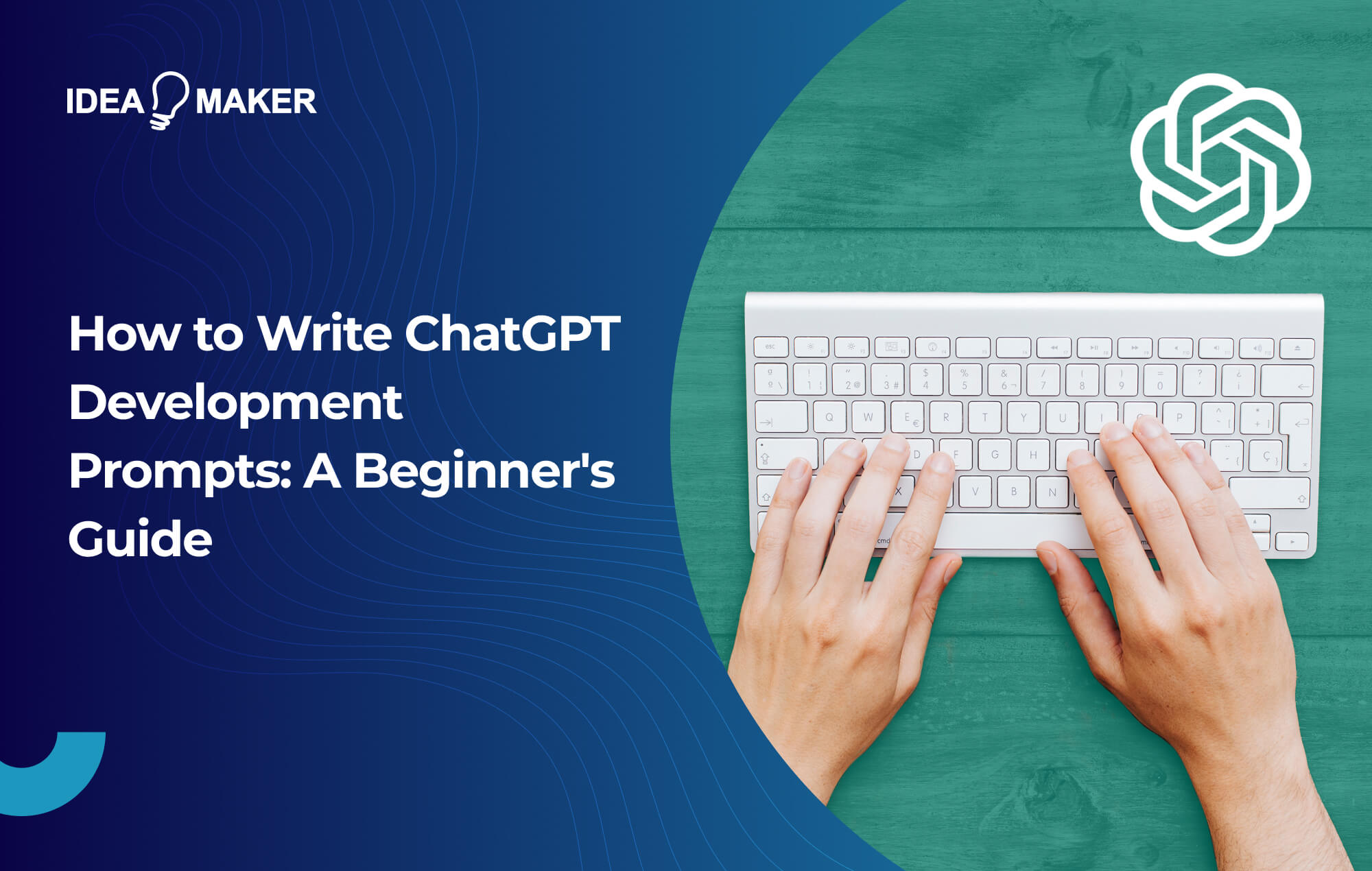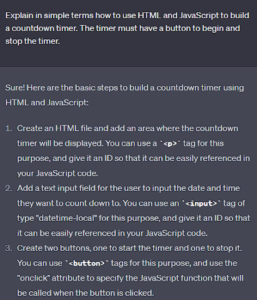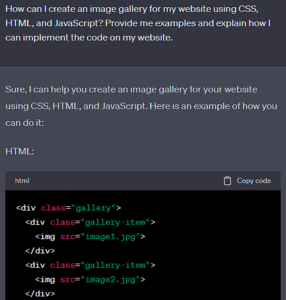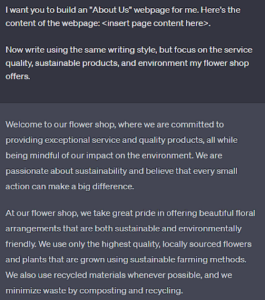Making a good ChatGPT prompt can be a tricky task, as generic, broad, or convoluted prompts generally lead to subpar or incorrect answers. For best results, ChatGPT prompts for developers must be clear, concise, and objective to ensure the AI understands the sentiment and context behind your questions.
Because writing effective ChatGPT prompts can save so much time during the development process, the practice is now considered an essential skill for modern software developers.
In this ChatGPT prompt guide, we’ll outline what makes a good prompt and some common mistakes to avoid when creating your development prompt. Keep reading to learn more.
Table of Contents
Understanding ChatGPT
ChatGPT is a natural language processing (NLP) model that uses artificial intelligence to understand written human language and answer questions on a wide range of topics.
To interact with the AI, we must use written ChatGPT prompts to communicate questions or requests. Then, the AI analyzes these prompts using NLP to interpret the intent, meaning, and sentiment behind the prompt before generating an answer.
When generating a reply, ChatGPT uses its large, curated dataset to provide the most accurate answer directly related to your prompt. The quality of the answer, however, is dependent on the quality of your prompt since ChatGPT has to perfectly understand what information you are looking for.
As a result, high-quality prompts should focus on giving the AI context while being clear and objective about the question or request.
What Are ChatGPT Development Prompts?
In short, ChatGPT development prompts are text paragraphs created to prompt ChatGPT to write, organize, or optimize code. Understanding how to construct these prompts will streamline software development and debugging, allowing developers to use their expertise to develop complex systems.
There are several types of development prompts, each suited to a specific use case. For example, code generation prompts are used to create snippets of code in the desired programming language, while debugging prompts use user-provided code to find and fix bugs, and code elaboration prompts use existing code to explain in an easy-to-understand language what a piece of code does.
Best Practices for Writing Effective Development Prompts
When it comes to writing development prompts, it’s critical to follow some basic guidelines in order to help refine ChatGPT’s answers. Here are the best practices to employ to ensure your prompts achieve optimal results.
Clarity and Specificity
Being specific and straight to the point pays off when chatting with ChatGPT. In fact, the more concise you are, the better the answers you will receive. This doesn’t mean that you have to write short prompts every time, but your prompts do need to be well-structured, keeping each sentence simple and objective.
An example of a good prompt would be: “Explain in simple terms how to use HTML and JavaScript to build a countdown timer. The timer must have a button to begin and stop the timer.”

Choose Appropriate Topics
Using the correct topic is the difference between an irrelevant reply and a precise answer when utilizing ChatGPT for development. For instance, asking the NLP model to explain how to make an image gallery for a website could result in answers from several programming languages that may not fit your purpose.
If you know that you need HTML, CSS, and JavaScript to build the image gallery, we can ask on-topic questions while keeping these languages in mind. By asking for an answer related to the languages you need, you’ll receive a precise answer with code snippets ready to be used.
Here’s an example of how choosing a topic and specifying your needs can generate a more relevant answer. The prompt we’ll be using is: “How can I create an image gallery for my website using CSS, HTML, and JavaScript? Provide me examples and explain how I can implement the code on my website.”

Understand the Language and Context of Prompts
Another crucial factor is how you use language when talking with ChatGPT. While the AI can understand the most commonly used languages around the world and understand slang to a degree, including idioms in your prompts could negatively affect the answers you get, leading to the AI misunderstanding your requests.
Providing context behind what you need can also help get better results, as the more the AI understands your request, the better results it can generate. You can get surprisingly great results by using concise language and explaining the background behind your request.
Here’s a good example of how concise language and context can generate a great prompt: “I am a flower shop owner that wants to learn software development to improve my business. I have a bachelor in administration. I have two hours of free time daily. Build a study plan for me with my skillset in mind.”

Use of Relevant Examples and Scenarios
Using examples or building fictional scenarios before refining your prompts is a great way to make ChaGPT understand your needs. Instead of asking the AI to build an “About Us” page for your website and receiving a generic and uninspired answer, we can use something that already exists as inspiration.
For instance, let’s say you like how a competitor structured their “About Us” page. You can simply feed it to the AI and ask it to build something inspired by it but with your own twist.
Here’s an example of how the prompt would look: “I want you to build an “About Us” webpage for me. Here’s the content of the webpage: <insert page content here>.
Now write using the same style, but focus on the service quality, sustainable products, and environment my flower shop offers.”

Listen to ChatGPT’s Feedback
When refining your development prompts, the AI will often provide you with feedback on how to implement your code, which languages to use, possible mistakes in the code, and how to code efficiently.
If the feedback is relevant, it’s a good idea to listen to ChatGPT and refine your prompt accordingly. Since ChatGPT works by using a large dataset, it’s likely that you will find new information about your prompt when it replies back, which you can then use to refine your next prompt.
For example, if you ask ChatGPT to make an image gallery for your website using iframes, it may warn you about the possible downfalls and issues of using iframes in this use case.
Here’s an example of ChatGPT providing feedback:
“How can I create an image gallery for my website using iframe? Provide me examples and explain the implementation.”
Common ChatGPT Prompt Mistakes
When crafting prompts for ChatGPT, you’ll need to be sure to avoid creating prompts that may confuse the AI. Some of the most common mistakes when designing development prompts are using ambiguous language, creating overly technical and long sentences, or creating bland prompts.
Here’s how these mistakes may negatively impact your ChatGPT experience.
Ambiguity
One of the most prevalent issues when using ChatGPT is creating ambiguous prompts, which can lead to irrelevant or incomplete answers. This is because the AI needs specific and coherent information to generate adequate responses.
To improve your prompt’s quality, you should avoid vague phrases or ambiguous terms, and keep the prompts focused on a single topic or question at a time.
Additionally, asking too many questions in a single prompt or approaching several subjects at once will confuse the AI. So, be sure to take your time making focused prompts instead of overly broad ones.
Overuse of Technical Terms
While ChatGPT understands the majority of the technical terms used by software developers, overusing them without proper context can cause ChatGPT to misunderstand the intent behind your prompt.
The best ChatGPT prompts use technical terms only when necessary. If you must use several technical terms, defining what they mean ahead of time will reduce the chance of them confusing the AI.
The natural language processing behind ChatGPT understands natural language, so balancing your prompts between plain and technical language is the most efficient way to achieve the best results.
Lack of Creativity
ChatGPT needs a creative user to reach its full potential. Repetitive, unimaginative, or bland prompts will severely limit ChatGPT’s ability to generate creative and robust software development solutions.
To get the most out of the NLP model, we must create prompts that force it to generate unorthodox answers. Creative prompts help the AI find innovative, engaging, and insightful solutions to your problems. By challenging ChatGPT, you will broaden your knowledge and improve the versatility of its answers, leading to robust solutions.
ChatGPT Development From Idea Maker
While using ChatGPT efficiently to create code isn’t difficult, it can often be time-consuming. However, at Idea Maker, we are specialists in creating solutions for your app that will help set your business apart from the rest.
Our developers can build your app faster than ChatGPT and provide you with safe, clean, optimized, and customizable code. We also offer post-release support to help maintain your app and implement new features. Contact our team today to draft the app of your dreams.


















